1. Early Life and Background
Muḥammad Ibn Abdallāh Ibn Hassan's early life was shaped by his lineage, religious upbringing, and the traditional Somali clan system, which collectively laid the foundation for his future leadership.
1.1. Birth and Family
Muḥammad Ibn Abdallāh Ibn Hassan was born on April 7, 1856. His birthplace is identified as Sacmadeeqo Lake, near Buuhoodle in Haud, although some accounts suggest Kirrit in Northern Somalia. He was the youngest son of Abdille, who was also a Sheikh and had 30 children from several wives. Muḥammad's mother, Timiro Sade, belonged to the Ali Geri branch of the Dhulbahante clan, which also had strong ties to the Ogaden clan. His lineage traced back to Sheikh Ismaan, his great-grandfather, who was from the Bah Geri Reer Xamar sub-clan of the Ogaden, a branch of the large Darod clan. Sheikh Ismaan was born in Barde on the lower Shebelle River and later moved to Bardera on the Jubba River. Muḥammad's grandfather, Hasan Nur, settled in the Dhulbahante territory in what would become eastern British Somaliland, where he established religious facilities. Muḥammad was raised as a Dhulbahante nomad, excelling in the handling of camels and horses, skills highly valued among the nomadic warriors. He held deep respect for his maternal grandfather, Sade Mogan.
1.2. Education and Religious Development
Muḥammad displayed exceptional religious aptitude from a young age. By the age of 11, he had completely memorized the Quran and was recognized as a Hafiz. He continued his intensive religious studies, earning the title of Sheikh by the age of 19. His pursuit of Islamic knowledge led him to travel extensively, visiting major Islamic centers such as Harar in Ethiopia, Mogadishu in Somalia, and various locations in Sudan. During these travels, he studied under a diverse group of 72 teachers, including both Somali and Arab scholars. In 1891, he returned home and married an Ogaden woman. Three years later, at the age of 30, Muḥammad, along with two uncles and 13 other families, embarked on the Hajj pilgrimage to Mecca. They remained in Mecca for a year and a half, where he became a devoted student of Mohammed Salih, a Sufi mystic from Sudan. Salih's teachings of the Salihiyya order profoundly influenced Muḥammad's theological views and spiritual path.
1.3. Early Activities and Ideological Formation
Upon his return to Somalia in 1895, Muḥammad first arrived in the northern coastal town of Berbera. At this time, northern Somali chieftains had already established individual agreements with the British, effectively making the region a British protectorate. Berbera served as a crucial port for meat exports to British India via Aden, Yemen, earning it the nickname "Aden's butcher's shop." In Berbera, Muḥammad established a branch of the Salihiyya order and began propagating its teachings. However, his advocacy against practices such as chewing khat and sheep tail fat, which the rival Qadiriyya order permitted, led to limited success in Berbera.
In 1897, Muḥammad and his Salihiyya followers left Berbera to return to the Dhulbahante territory. During his journey, he encountered Somali orphans being cared for by a Catholic Church mission. When one child reportedly stated, "My father is God," Muḥammad became deeply concerned about the spread of Christianity in Somalia. This concern intensified in 1899 when he purchased rifles from British soldiers. The soldiers, however, claimed the rifles were stolen, leading to a confrontational letter from a British non-commissioned officer demanding their return. This "offensive" communication angered Muḥammad, solidifying his anti-colonial stance and transforming his religious propagation into a strong critique of British and Ethiopian Christian influence. Both the Ethiopian government and the British administration perceived his activities as disruptive and sought to impede them.
2. The Dervish Movement
The Dervish movement, founded by Muḥammad Ibn Abdallāh Ibn Hassan, was a powerful force rooted in religious conviction and a fervent desire for Somali independence from colonial rule.
2.1. Formation and Ideology
The Dervish movement was founded by Muḥammad Ibn Abdallāh Ibn Hassan, partly as a direct challenge to the established Qadiriyya order and its perceived compromises with colonial powers. Based on the principles of the Salihiyya order, the movement's core ideology centered on a fierce defense of Islam against Christian encroachment. Muḥammad, through his speeches and poetry, vehemently criticized the Christian colonialists for what he saw as the destruction of Islamic culture and the Christianization of Somali children. He declared a jihad, or holy war, against the British, Italian, and Ethiopian invaders, asserting that defending Islam from these "infidels" was the paramount duty. He emphasized the critical need for Somali unity, labeling those who refused to join the struggle as "unbelievers." His ultimate goal was to drive the Christian powers "into the sea." The Dervish movement evolved into a highly centralized state, built upon strict hierarchical principles derived from the Salihiyya order. Muḥammad acquired weapons from the Ottoman Turks and Sudan, and he appointed loyal followers as officials across various Somali regions. The movement's disciplined nature, inspired by the ascetic Sufi Dervish tradition, led him to name his state the Daraawiish, emphasizing purity and dedication.
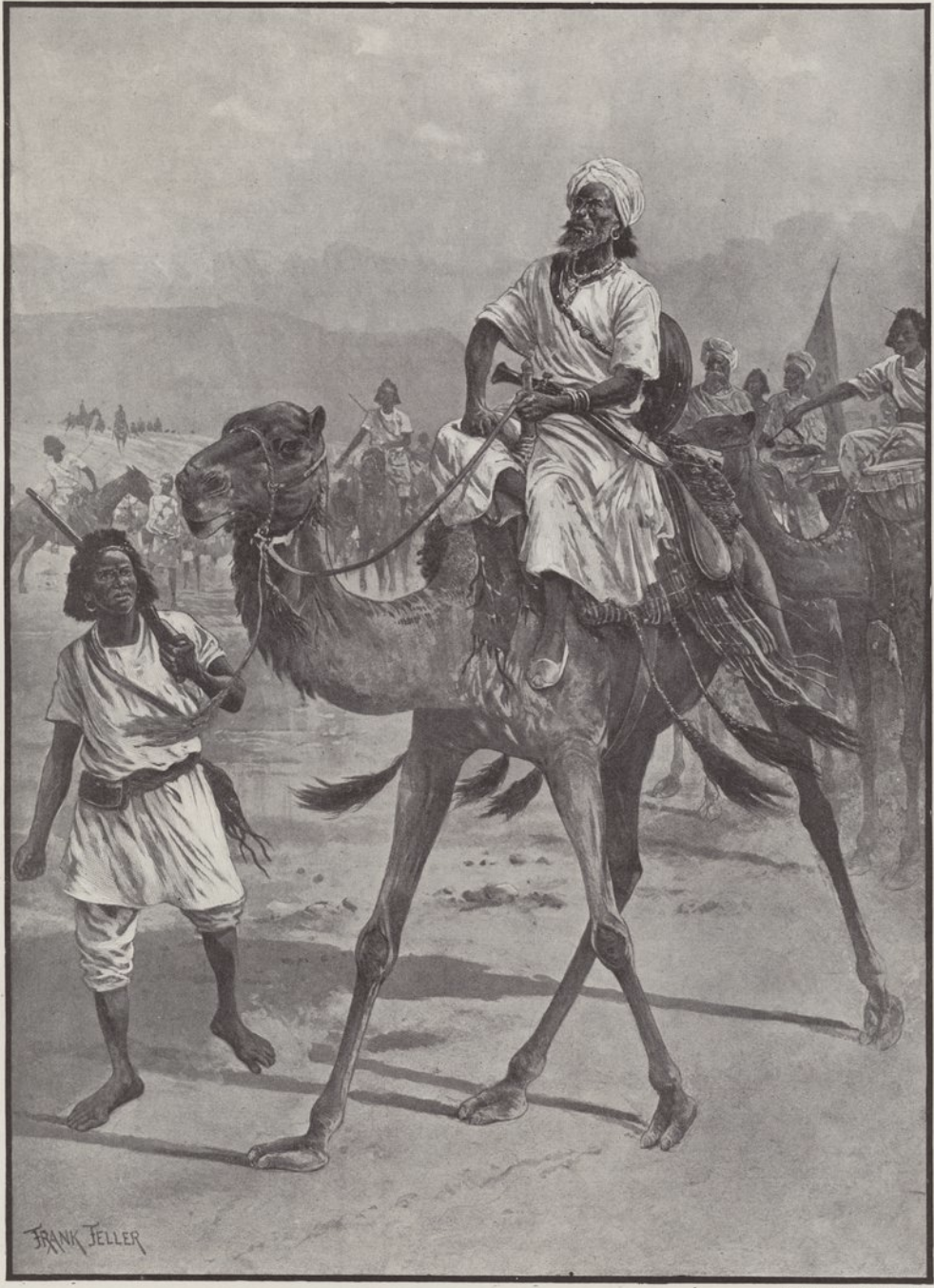
2.2. Establishment of the Dervish State
Initially, the Dervish movement established its base in Burco. Following a conflict with the Mohammed Subeer clan, Muḥammad relocated his stronghold to Nugaal. Later, between 1910 and 1914, the Dervish capital was moved from Illig to Taleh, situated in the heart of Nugaal. In Taleh, the Dervishes constructed three formidable stone garrison forts and a luxurious palace for Muḥammad himself. He also established a new guard composed of individuals from outcast clans, reflecting a strategy to build loyalty beyond traditional clan lines. By 1913, the Dervish State had expanded its control significantly, dominating much of the Somali hinterland. They built additional forts in strategic locations such as Jildali and Mirashi in northern Somalia, Werder and Gorahai in the Ogaden region of Ethiopia, and Beledweyne in southern Somalia, consolidating their authority across a vast territory.
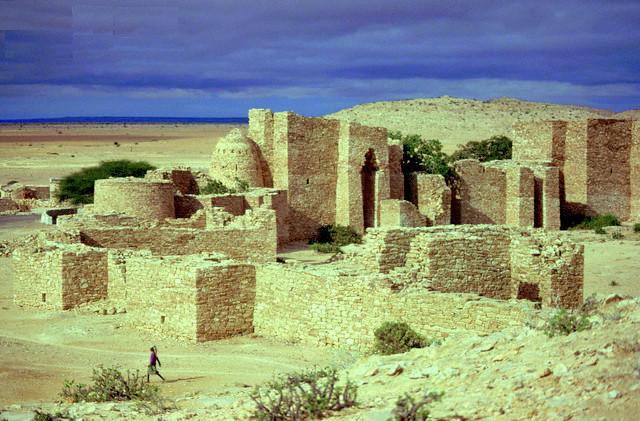
2.3. Wars Against Colonial Powers
The Dervish movement engaged in numerous military conflicts against the British, Italian, and Ethiopian forces, employing various strategies to resist colonial expansion.
2.3.1. British, Italian, and Ethiopian Campaigns
In March 1900, an Ethiopian contingent plundered camels belonging to the Mohammed Subeer clan. In response, Muḥammad attacked the Ethiopian forces at Jijiga, recovering all the looted camels. This victory significantly enhanced his reputation. In June 1900, he further demonstrated his military prowess by raiding an Isaaq sub-clan allied with the British, seizing approximately 2,000 camels. These successes bolstered his standing among the Ogaden clan, and he solidified his alliances by marrying a daughter of a prominent Ogaden chieftain and marrying his sister, Tohyar Shaykh Abdille, to Abdi Mohammed Waale, an influential figure of the Mohammed Subeer clan.
Towards the end of 1900, Menelik II, the Ethiopian Emperor, proposed a joint military operation with the British against the Dervishes. The British responded by assembling a force of 1,500 Somali soldiers led by 21 European officers under Lieutenant Colonel Eric John Eagles Swayne, which departed from Burco on May 22, 1901. Concurrently, an Ethiopian army of 15,000 soldiers advanced from Harar to converge with the British forces. Facing this combined onslaught, the Dervish army numbered around 20,000 fighters, 40 percent of whom were cavalry.
From 1901 to 1904, the Dervish forces initially held the upper hand, inflicting substantial losses on the British, Ethiopian, and Italian armies. This period coincided with the Second Boer War, which diverted British resources and attention away from Somalia. The Dervishes' successes garnered support from other Somali clans who had not previously recognized Muḥammad as a religious leader. However, on January 9, 1904, at the Battle of Jidale (also known as Jidballi), British Commander General Charles Egerton achieved a decisive victory, killing 1,000 Dervish fighters. This defeat forced Muḥammad and his remaining forces to flee to Majeerteen territory, eventually settling in Illig on March 21, which served as their base for several years.
On August 9, 1913, at the Battle of Dul Madoba, a Dervish force attacked the Dhulbahante clan, inflicting 57 casualties (killed or wounded) on the 110-man Somaliland Camel Constabulary. Among the dead was the British commanding officer, Colonel Richard Corfield. Muḥammad commemorated this victory in his poem titled "The Death of Richard Corfield." In the same year, fourteen Dervishes infiltrated Berbera, causing panic among its citizens. In response, the Somaliland Camel Corps was established in 1914 as an expanded and improved version of the constabulary. British officers such as Adrian Carton de Wiart (who lost an eye during the campaign) and Hastings Ismay (later Winston Churchill's chief military adviser) were deployed. The outbreak of World War I temporarily interrupted British operations against the Dervishes, a situation Muḥammad exploited by securing cooperation from the Ottoman Empire and Germany to attack British facilities.
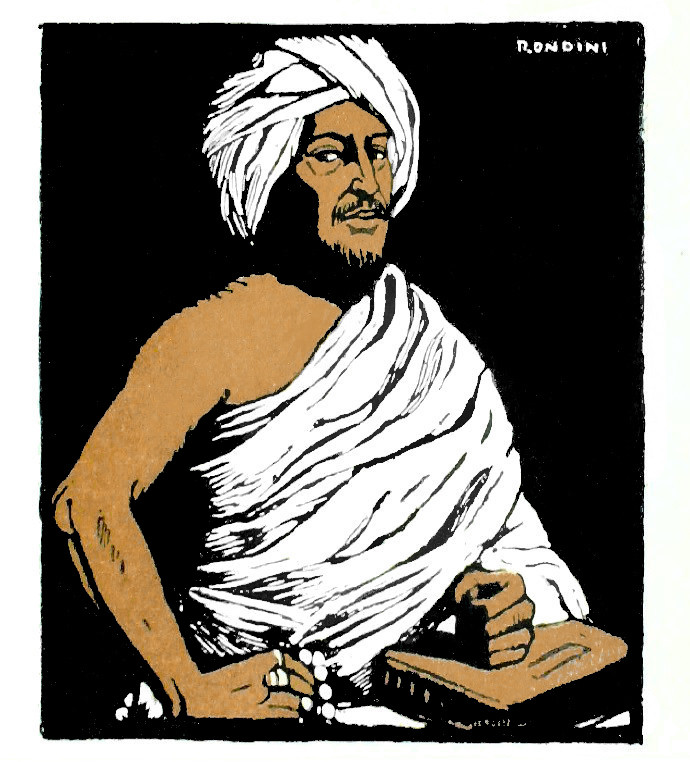
2.3.2. Diplomacy and Alliances
Muḥammad Ibn Abdallāh Ibn Hassan actively pursued diplomatic efforts and sought alliances to strengthen the Dervish movement. He dispatched envoys throughout Somalia to rally support from various Somali clans, urging them to join his struggle against the colonial powers. He also sent emissaries to Yemen to request cooperation and assistance.
A significant diplomatic success was securing the participation of the Marehan clan, a branch of the Darod, in southern Somalia. The Marehan inhabited the region between Bardera and Doolow along the Jubba River, extending south towards the Tana River in present-day Kenya. This alliance expanded the Dervish sphere of influence into southern Somalia. However, the complex internal power dynamics among Marehan sub-clans, such as the conflict between the nomadic Rer Guri and the Galti, limited their effectiveness as a diversionary force against the British and Ethiopians. Furthermore, while Muḥammad was a member of the Ogaden clan, he did not manage to secure the full cooperation of all Ogaden tribes.
2.4. Internal Dynamics and Religious Disputes
The Dervish movement, despite its unified front against colonial powers, experienced internal dissent and significant religious disputes, particularly with the rival Qadiriyya order.
Muḥammad's autocratic style of leadership led to internal conflicts. A notable instance occurred when Hussen Hirsi Dala Iljech', a chieftain of the Mohammed Subeer clan, plotted to assassinate him. Although Muḥammad escaped, his maternal uncle and close associate, Aw 'Abbas, was killed. Weeks later, when the Mohammed Subeer clan sent a peace delegation of 32 men, Muḥammad had all of them arrested and executed. This shocking act prompted the Mohammed Subeer clan to seek aid from Ethiopia, forcing the Dervishes to withdraw to Nugaal.
Around 1909, a secret meeting took place under a large tree, later dubbed "Anjeel tale waa" ("The Tree of Bad Counsel"). Approximately 400 Dervish followers decided to abandon Muḥammad after receiving an expulsion letter from Sheikh Salah, the head of the Salihiyya Tariqa, which excommunicated Muḥammad. Their departure significantly weakened and demoralized him, leading him to compose a poem titled The Tree of Bad Counsel reflecting his anger and disappointment.
The animosity between Muḥammad's Salihiyya order and the rival Qadiriyya school, which began in Berbera, continued to escalate. Heated poetic exchanges occurred between Muḥammad and prominent Qadiriyya Sheikh Uways al-Barawi from Barawa, who was also a leader of the 1908 Benadir revolt. Sheikh Uways composed a qasida criticizing Muḥammad and the Salihiyya, accusing them of heresy, justifying the shedding of the blood of religious scholars (ulama), prohibiting the study of sciences like law and grammar, rejecting intercession through deceased sheikhs (like Al-Jilani), resembling the Wahhabiyya in their appearance, publicly trading paradise for money, engaging in fornication under the guise of religious license, following their own opinions rather than sacred texts, and performing blasphemous acts during their dhikr rituals. He concluded by calling Muḥammad's followers a "sect of dogs" and "the northern faction" (Dervishes).
Muḥammad responded with a long poem, ending with sharp words that dismissed the Qadiriyya as "backsliding apostates" who had "gone astray from the Prophet's way." This exchange escalated into mutual accusations of takfir (declaring another Muslim an apostate). Tragically, Sheikh Uways was murdered by the Dervishes in 1909, an act that ironically seemed to confirm Uways's accusation that Muḥammad deemed it lawful to spill the blood of the learned. Muḥammad further mocked Uways's death with a final poem, "Behold, at last, when we slew the old wizard, the rains began to come!"
3. Ideology and Poetry
Muḥammad Ibn Abdallāh Ibn Hassan's leadership was deeply intertwined with his religious interpretations, political philosophy, and the powerful role of his poetry in mobilizing his followers.
3.1. Religious and Political Thought
Muḥammad's core religious and political thought was centered on the concept of jihad against what he perceived as Christian colonial aggression. He viewed the British, Italian, and Ethiopian presence in the Somali Peninsula as a direct threat to Islamic culture and the spiritual well-being of the Somali people, particularly condemning the Christianization of Somali children. His philosophy emphasized the paramount importance of Somali unity to confront these invaders, often labeling those who did not join his struggle as "infidels." He articulated a vision of driving the Christian powers out of Somali lands, asserting that this was a divine mandate. Politically, he established a strict, centralized state based on the principles of the Salihiyya Sufi order. This structure aimed to impose a rigid hierarchy and discipline, which he believed was necessary for the success of the Dervish movement and the establishment of an independent Islamic state. His rule, however, was also characterized by autocratic tendencies, leading to internal dissent and violent suppression of rivals.
3.2. Literary Works
Muḥammad Ibn Abdallāh Ibn Hassan was a prolific poet and orator, skillfully using his literary works to articulate his nationalist messages, social commentary, and to mobilize widespread support for the Dervish movement. His poetry served as a powerful tool for propaganda and inspiration, deeply embedding his ideology within Somali oral tradition.
Among his notable poems is "The Death of Richard Corfield," composed to commemorate the Dervish victory at the Battle of Dul Madoba in 1913, where the British officer Richard Corfield was killed. Another significant work is "The Tree of Bad Counsel" (Anjeel tale waa), which he wrote in response to the defection of 400 Dervish followers around 1909, reflecting his anger and disappointment at their betrayal.
Other poems attributed to him include "Haddaan waayey," "Maqashiiya uunka" (a religious and nationalist appeal), "Afbakayle" (which addresses themes of treachery and etiquette), "Mariyama Shiikh" (dealing with clemency), and "Dardaaran" (which warns against the hidden malicious intent behind stipends offered by colonialists). His poetic exchanges with religious rivals, such as Sheikh Uways al-Barawi, also highlight his sharp wit and theological arguments. Scholar Said S. Samatar has extensively analyzed Muḥammad Abdille Hassan's oral poetry, assessing its profound nationalist and literary contributions to the Somali heritage.
4. Later Years and Defeat
The final years of Muḥammad Ibn Abdallāh Ibn Hassan's Dervish movement were marked by periods of consolidation, followed by decisive British military campaigns that ultimately led to its downfall and his death.
4.1. Consolidation and Peak Influence
Between 1909 and 1910, Muḥammad moved the Dervish capital from Illig to Taleh, a strategic location in the heart of Nugaal. Here, the Dervishes constructed three formidable stone garrison forts and a luxurious palace for Muḥammad himself, solidifying their administrative and military center. By 1913, the Dervish movement had reached its peak influence, dominating the entire hinterland of the Somali Peninsula. They had established forts in various key locations, including Jildali and Mirashi in northern Somalia, Werder and Gorahai in the Ogaden region of Ethiopia, and Beledweyne in southern Somalia. This period represented the Dervish State's greatest territorial control and influence before the final British offensives.
4.2. Final Campaigns and British Offensive
In early 1920, the British launched a decisive and well-coordinated air and land offensive against the Dervish settlements. This campaign inflicted a stunning defeat on the Dervish forces, severely damaging their forts and causing heavy casualties. The Dervishes were forced to retreat into the Ogaden territory in Abyssinia.
During their retreat, the Dervishes raided the Ogaden Bah Hawadle clan, who were under the protection of the Habr Yunis clan. In response to this incident, Haji Warabe of the Reer Caynaashe clan assembled an army of 3,000 warriors. On the dawn of July 20, 1920, Haji Warabe's army reached Shineleh, where the Dervishes, numbering approximately 800, were encamped. The Dervishes were swiftly defeated, with 700 killed in the battle, and the few remaining survivors fleeing south. Haji Warabe and his army captured 60,000 camels and 700 rifles from the defeated Dervishes. During the battle, Haji Warabe entered Muḥammad's tent but found it empty, with his tea still hot, indicating his narrow escape. Muḥammad, now a fugitive, continued his flight westwards into the arid wastelands of the Ogaden.
4.3. Exile and Death
In October 1920, Muḥammad Ibn Abdallāh Ibn Hassan eventually settled at Guano Imi, located at the headwaters of the Shebelle River in the Arsi country of Ethiopia, accompanied by approximately 400 followers. When Fitawrari Seyoum, commanding the nearest Abyssinian garrison at Ginir, learned of his arrival, he dispatched an officer, Garazmatch Ayale, to ascertain the reason for his entry into Abyssinian territory. Muḥammad received the officer cordially, explaining that he had been defeated by the British in battle and sought protection in Abyssinia. He then sent four rifles and a revolver as gifts to the Fitawrari and requested provisions in return.
Fitawrari Seyoum reported the matter to Ras Tafari (the future Emperor Haile Selassie I), who ordered him not to attack Muḥammad but to keep him under close observation. However, provisions were not supplied, and famine soon afflicted Muḥammad's camp. Most of his remaining followers succumbed to sickness and hunger, with the few survivors reportedly dispersing shortly thereafter.
On December 21, 1920, Muḥammad Ibn Abdallāh Ibn Hassan died of influenza at the age of 64. His grave is believed to be located somewhere near Imi town in the Somali Region of Ethiopia, though the exact spot remains unknown. In mid-2009, the Somali Regional State administration announced its intention to exhume his remains and rebury them in his old castle at Imi. While most individuals who knew the precise location of his tomb had long passed away, the Regional Information Minister, Guled Casowe, stated that a few very old individuals might still be able to provide details. Remains were subsequently found in a graveyard at Ginir, and the Somali Region of Ethiopia considered DNA testing to determine if they belonged to Sayid Mohamed Abdullah Hassan. His death marked the end of the Dervish rebellion.
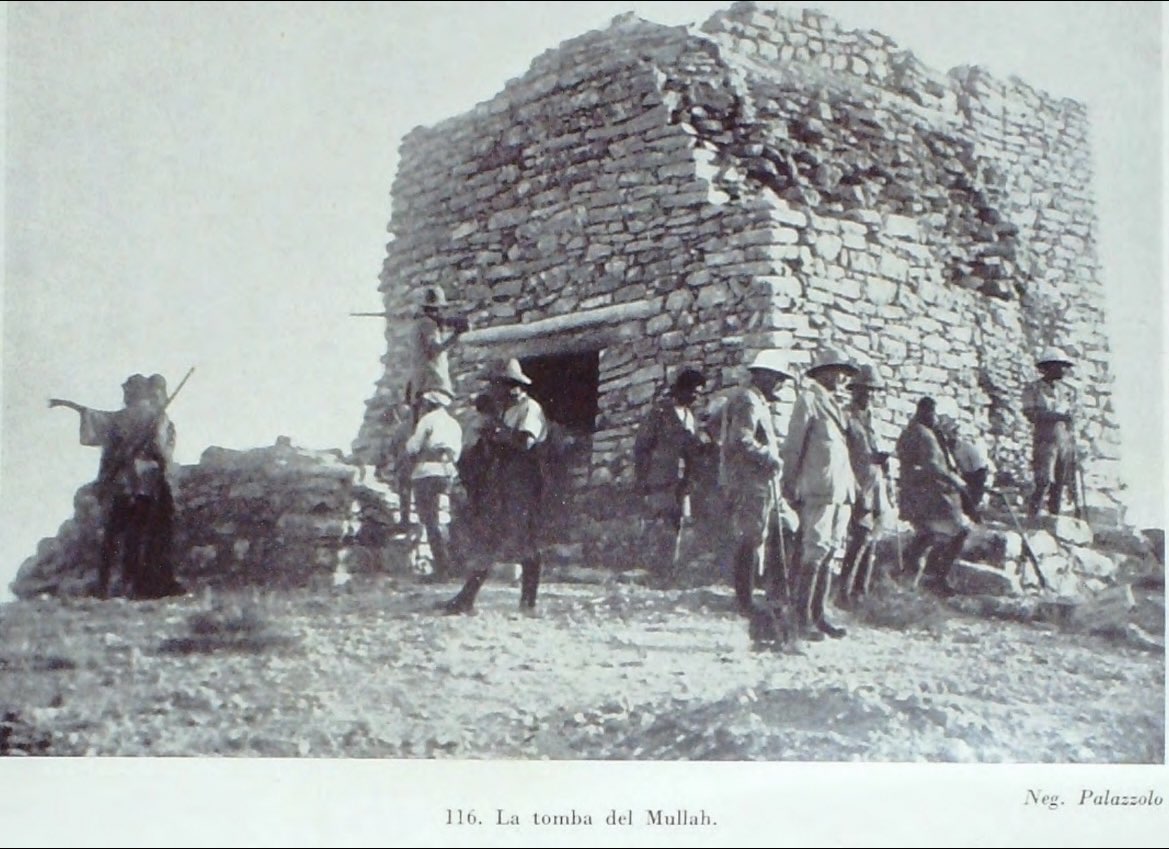
5. Legacy and Assessment
Muḥammad Ibn Abdallāh Ibn Hassan's legacy is complex, encompassing his role as a national hero and symbol of resistance, alongside criticisms of his leadership.
5.1. Somali Nationalism and Symbolism
Muḥammad Ibn Abdallāh Ibn Hassan is widely regarded as an iconic figure of Pan-Somalism and a significant symbol of resistance against colonial powers. He is considered one of the great revolutionaries of the turn of the 20th century by members of the Pan-Africanist movement, including figures like Kwame Nkrumah. His enduring influence has led to him being recognized as the "Father of the Somali People," embodying the struggle for self-determination and the preservation of Somali identity in the face of foreign intrusion. His efforts to unite Somali clans under a common religious and nationalist cause laid foundational elements for future nationalist aspirations.
5.2. Criticisms and Controversies
Despite his revered status as a nationalist hero, Muḥammad Ibn Abdallāh Ibn Hassan's legacy is also marked by significant criticisms and controversies. The British famously labeled him the "Mad Mullah," a pejorative term that underscored their perception of his leadership as fanatical and irrational. His rule was characterized by autocratic tendencies, which led to internal dissent and violent suppression of opposition. A notable example of his controversial methods was the murder of 32 peace delegates from the Mohammed Subeer clan, whom he arrested and executed. Furthermore, his bitter religious disputes with rival Islamic scholars, particularly Sheikh Uways al-Barawi, escalated to mutual accusations of apostasy (takfir) and culminated in the Dervish movement's murder of Sheikh Uways in 1909. Muḥammad's subsequent poem mocking Uways's death further highlighted the brutal aspects of his leadership and the uncompromising nature of his religious and political agenda.
5.3. Cultural and Historical Impact
Muḥammad Ibn Abdallāh Ibn Hassan's lasting influence extends deeply into Somali culture, historical narratives, and the broader Pan-Africanist movement. His extensive body of oral poetry, which blended religious exhortations with nationalist calls to arms, continues to be a vital part of Somali literary heritage. These poems not only mobilized his contemporaries but also shaped a narrative of resistance that has resonated through generations, influencing subsequent Somali nationalist movements. Historically, his twenty-year struggle against three colonial powers demonstrated an unprecedented level of organized resistance in the Horn of Africa, providing a powerful precedent for anti-colonial movements across the continent. Within the Pan-Africanist movement, he is celebrated as a pioneer who fiercely defended African sovereignty and dignity against European imperialism, contributing to the intellectual and ideological foundations of self-liberation.
6. Memorialization and Representation
Muḥammad Ibn Abdallāh Ibn Hassan's historical significance is reflected in various forms of public commemoration and depictions in media and culture.
6.1. Monuments and Public Commemoration
Several monuments and public commemorations have been dedicated to Muḥammad Ibn Abdallāh Ibn Hassan, reflecting his status as a national hero in Somalia and beyond. A Socialist realist statue depicting him riding his horse, Hiin-Faniin (sometimes called Sayidka or Siyadka), was erected in central Mogadishu, near the Mogadishu Central Mosque, in the 1970s or 1980s. However, this statue was torn down between 1991 and 1993 during the Somali Civil War and sold as scrap metal, leaving only its damaged foundation. On October 18, 2019, the monument was restored and unveiled by Somali President Mohamed Abdullahi Mohamed, alongside other refurbished national monuments. A similar equestrian statue was erected in the Ethiopian city of Jigjiga in 2013, further acknowledging his historical significance in the region. Additionally, in the Haud region, a monument known as Sacmadeeqa marks his birthplace.
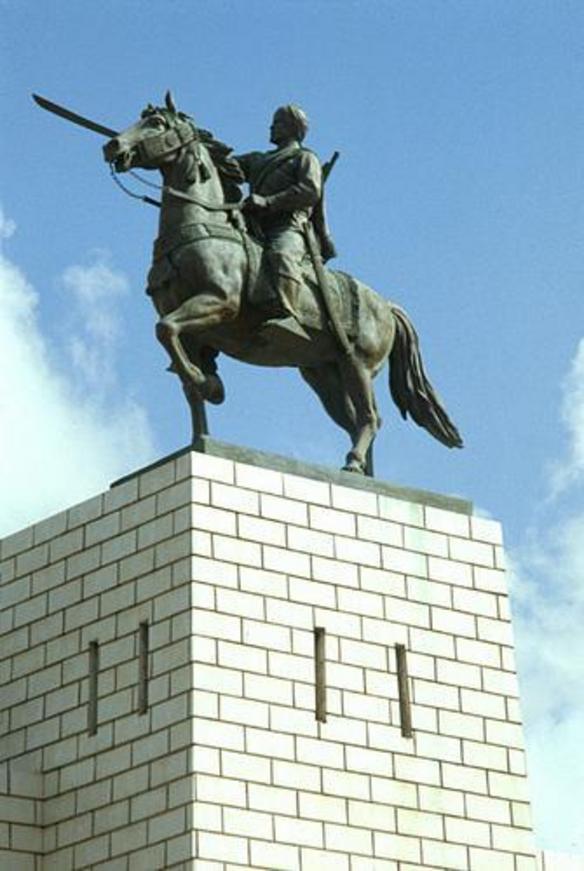
6.2. Depictions in Media and Culture
Muḥammad Ibn Abdallāh Ibn Hassan's life and the Dervish struggle have been portrayed in various forms of media and popular culture, contributing to his enduring presence in public consciousness.
- The documentary film The Parching Winds of Somalia includes a significant section dedicated to the Dervish struggle and its leader.
- The historical romance novel Ignorance is the Enemy of Love by Farah Mohamed Jama Awl features a Dervish protagonist named Calimaax, who is part of a tragic love story and participates in the fight against the British, Italians, and Ethiopians in the Horn of Africa.
- In 1983, a film titled A Somali Dervish was directed by Abdulkadir Ahmed Said, marking Somalia's first domestic film production.
- The television series Law & Order: Criminal Intent includes references to the Dervishes and their leader in the episode "Loyalty," which also features a character purported to be a descendant of Muḥammad Ibn Abdallāh Ibn Hassan.
- In 1985, an ambitious 4-hour and 40-minute Indian-produced epic film, The Somalia Dervishes, went into production. Directed by Salah Ahmed with a budget of 1.80 M USD, it starred a descendant of Hassan and featured hundreds of actors and extras.
- The comic book series Corto Maltese depicts the protagonist traveling to the Horn of Africa during the Dervishes' conflict with the British, witnessing their storming of a British fort. During these adventures, Corto Maltese develops a lasting friendship with a Dervish warrior named Cush, who subsequently appears in other stories.
7. Related Figures and Events
Muḥammad Ibn Abdallāh Ibn Hassan's life and the Dervish movement were intertwined with numerous significant individuals and historical events that shaped the political landscape of the Horn of Africa.
7.1. Key Associates and Rivals
Muḥammad Ibn Abdallāh Ibn Hassan interacted with a range of key figures, including loyal associates who supported his cause and bitter rivals who opposed him.
- Key Associates:**
- Haji Sudi: One of the founding members of the Dervish movement and its chief military commander.
- Sultan Nur: Sultan of the Habr Yunis clan, a founding member of the Dervish movement, and the Dervish Sultan.
- Hasna Doreh: Muḥammad Ibn Abdallāh Ibn Hassan's wife.
- Ismail Mire: A soldier and a prominent bard within the Dervish movement.
- Bashir Yussuf: A Somali religious leader who fought alongside Muḥammad Ibn Abdallāh Ibn Hassan against the British.
- Rivals and Opponents:**
- Sheikh Uways Al-Barawi: A significant religious rival of Muḥammad Ibn Abdallāh Ibn Hassan and a leader of the 1908 Benadir revolt. Their theological disputes were intense and ultimately led to Uways's murder by the Dervishes.
- Sheikh Madar: The leader of the Qadiriyya tariqa and a scholarly opponent of the Salihiyya and Dervish movements.
- John Gough: A British Army officer who was awarded a Victoria Cross for his actions as a column commander during the Third Somaliland Expedition against Hassan.
- Alexander Stanhope Cobbe: Another British officer who received a Victoria Cross for his actions at Erego in 1902.
- Adrian Carton de Wiart: A British army officer who lost an eye during an attack on a fort at Shimbiris in 1914.
- Hastings Ismay: A British staff officer who later became Winston Churchill's chief military adviser.
7.2. Significant Battles and Events
The Dervish movement was defined by a series of critical battles and events that marked its rise, consolidation, and eventual defeat.
- Battle of Jidale (Jidballi):** A major engagement on January 9, 1904, where British forces under General Charles Egerton inflicted heavy losses on the Dervishes, forcing Muḥammad to retreat.
- Battle of Dul Madoba:** On August 9, 1913, Dervish forces raided the Dhulbahante clan, resulting in significant casualties for the British-led Somaliland Camel Constabulary, including the death of Colonel Richard Corfield.
- Second Boer War:** This conflict (1899-1902) in South Africa diverted British military resources, inadvertently providing a window of opportunity for the Dervish movement to gain strength in its early years.
- World War I:** The outbreak of World War I in 1914 led to the temporary withdrawal of some British forces from Somaliland, allowing Muḥammad to secure cooperation from the Ottoman Empire and Germany, which he used to his advantage against the British.
- 1920 British Offensive:** A decisive, well-coordinated air and land attack by the British in early 1920 that led to the final defeat of the Dervish forces and the collapse of their state.